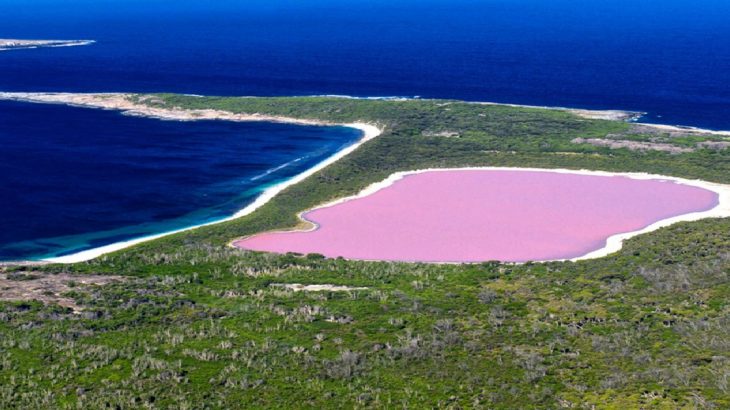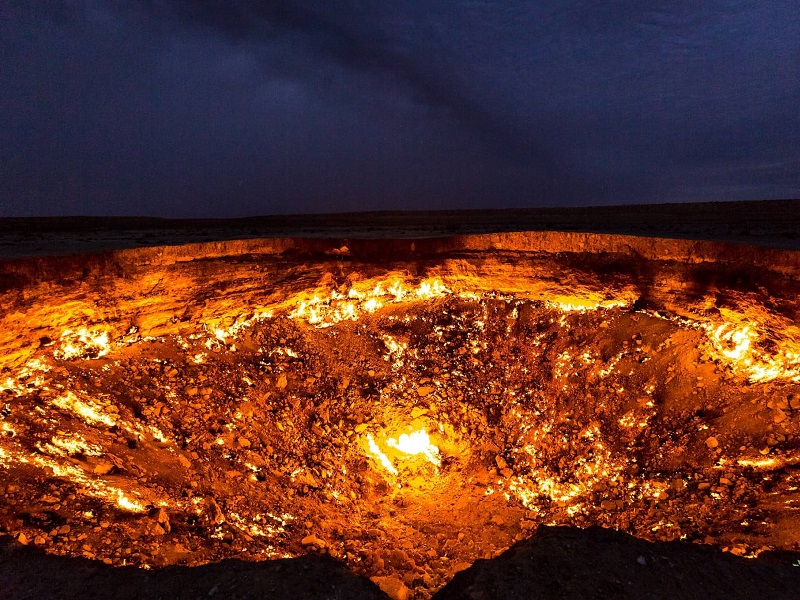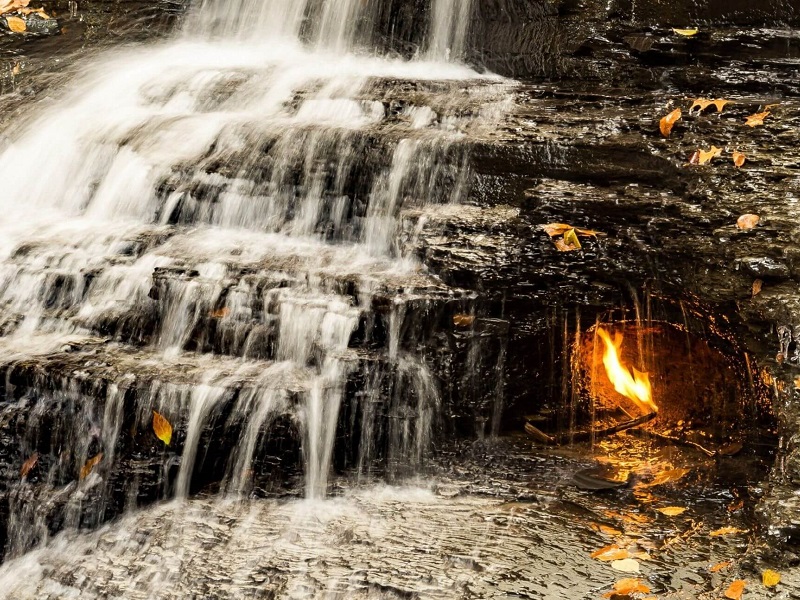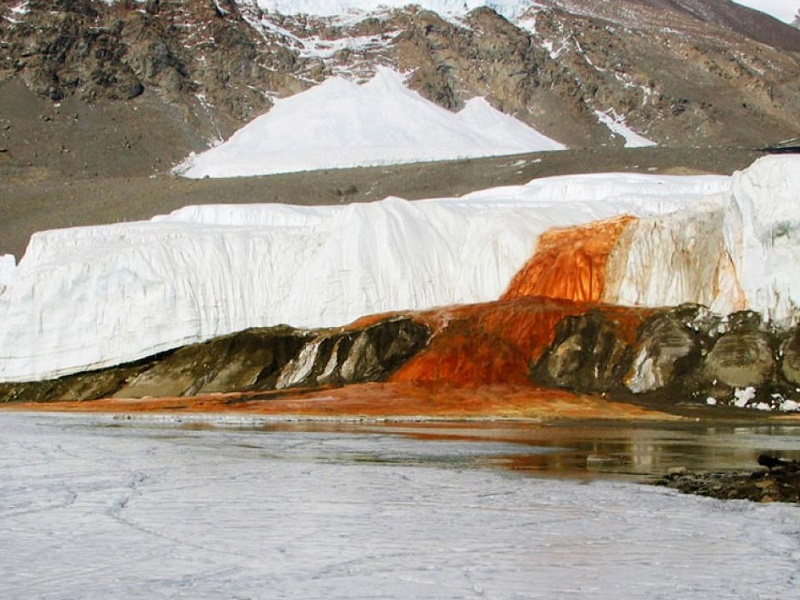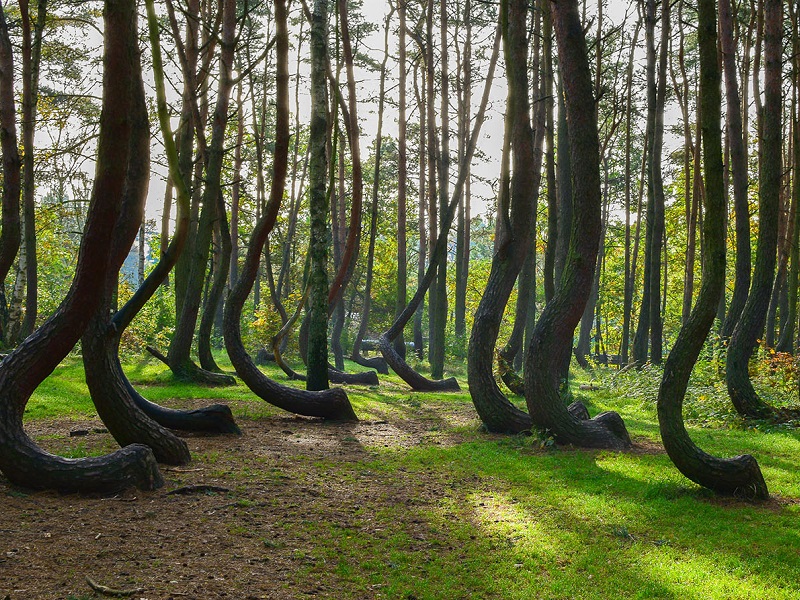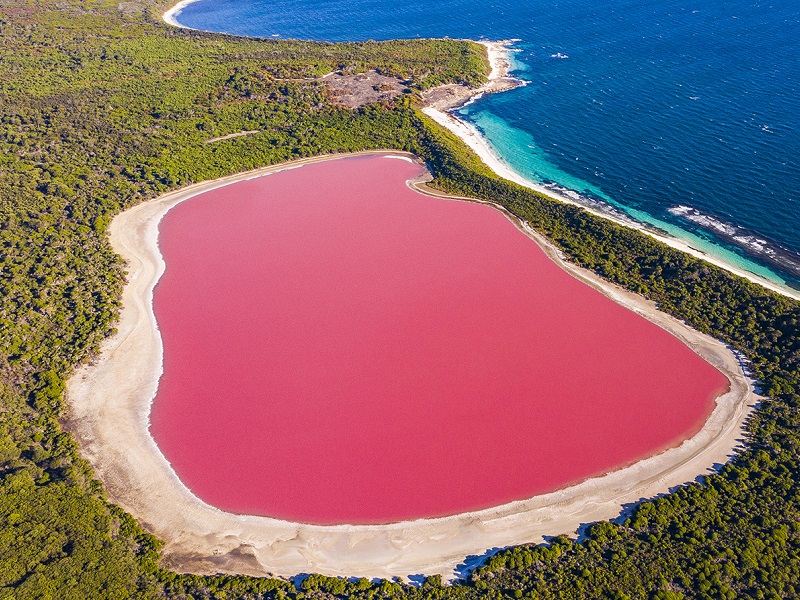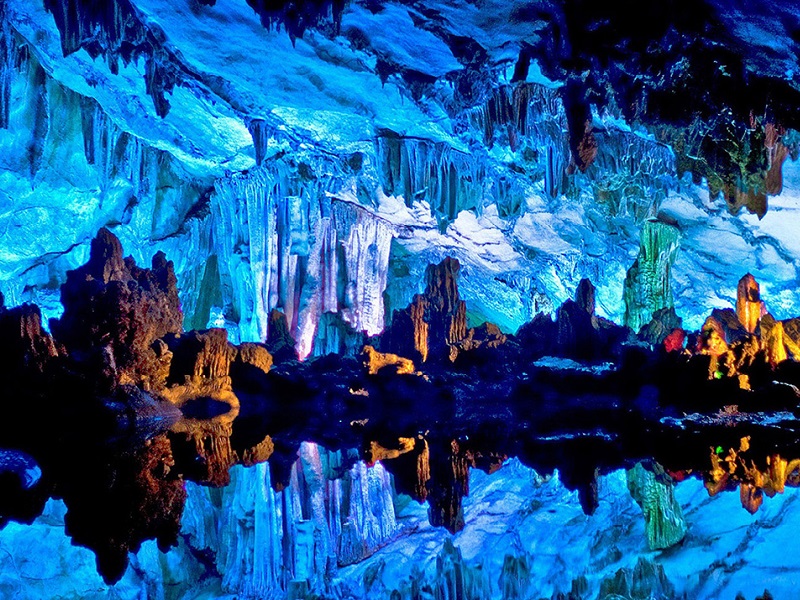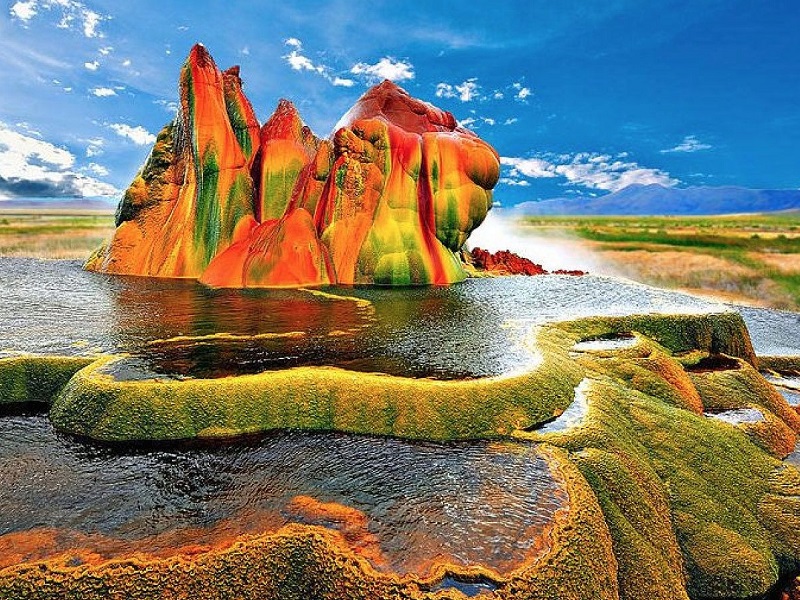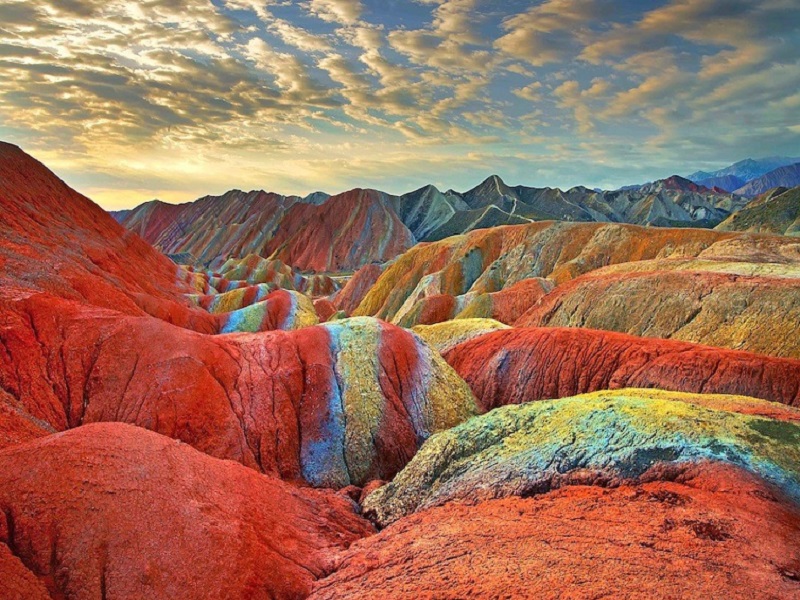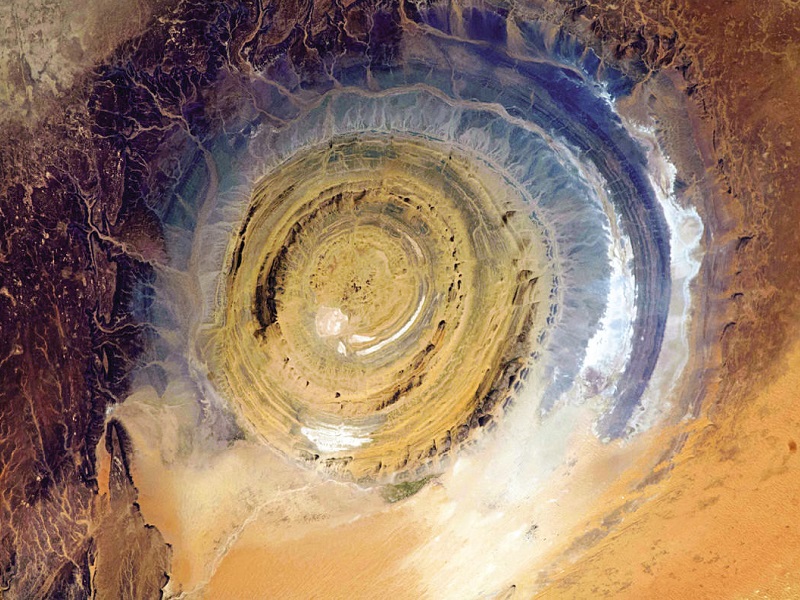With diverse climatic conditions and intricate geographies, Mother Earth never ceases to amaze us in various ways. There are several exceptional places on earth, which are unique, strange, mysterious, or special in various ways. And, these have many unknown mysteries and sphinx hidden behind them. Till today, archaeologists, scientists, and other researchers have not been able to gather knowledge and information about these mysterious places. However, some of them are reachable for humans and are perfect places to indulge those who have weird and wonderful interests in the otherworldly. If you are such a person, then go through our list of the most mysterious places in the world, which are a puzzle in themselves and exist as a mystery.
Gateway To Hell, Turkmenistan
Also called Darvaza Gas Crater, the Gateway to Hell is a burning natural gas field that collapsed into a cavern near Darvaza, Turkmenistan. Accurate records of how the crater ignited have not been discovered, and some facts are disputed. One of the more popular theories is that Soviet geologists intentionally set it on fire in 1971 to prevent the spread of Methane gas, and it is thought to have been burning continuously ever since. With 226-foot-wide and 98-foot-deep, it is one of the must-visit mysterious places in the world. Though the President of Turkmenistan ordered that the crater should be closed in 2010, the Gates of Hell remain open to visitors and became more popular than ever.
Eternal Flame Falls, New York
The Eternal Flame Falls is a 35-foot small waterfall nestled in the Shale Creek Preserve, a section of Chestnut Ridge Park in Western New York. The small cave at the base of the waterfall emits natural gas that can be lit to produce a small flame and is believed to be lit thousands of years ago by Native Americans. It never goes out, and scientists say the conflagration is created by the presence of natural gas seeping from the subterrane. But due to exceptionally heavy rains in August 1967, the permanent flame and flooding of electrical equipment disabled the spark igniter. With the breathtaking image of a small but mighty flame under massive torrents of water, Eternal Flame Falls remains a scientific mystery. It is also a very popular area for hiking in New York, among the top places to visit in the USA.
Blood Falls, Antarctica
Located in Antarctica’s McMurdo Dry Valleys, Blood Falls, named for its ruddy color, is not a gush of blood from some unseen wound. This frightening sight is actually a large fall of saltwater that emerges from Taylor Glacier and flows into Lake Bonney. The flow was previously a mystery, as the mean temperature is 1.4 degrees Fahrenheit (-17 degrees Celsius) and little glacial melting can be seen at the surface. But later it came to know that, there is a complex network of subglacial rivers and a subglacial lake—all filled with brine high in iron, giving the falls its reddish tint. According to the study, the brine remains liquid within the subglacial and englacial environments through latent heat of freezing coupled with elevated salt content.
The Crooked Forest, Poland
The Crooked Forest is a grove of oddly-shaped pine trees located in the village of Nowe Czarnowo near the town of Gryfino in northwestern Poland. Planted around 1930, it is a protected natural monument of Poland, and among the must-visit mysterious places around the world as the entire forest appears to be bent over almost 90 degrees at the trunk, before twisting back straight again and growing vertically into the Slavic sky. It is generally believed that some form of human tool or technique was used to make the trees grow or bend this way, but the fact has never been determined and remains a mystery to this day. It has been speculated that a snowstorm could have bent the trunks, but there is little evidence of that.
Antelope Canyon, Arizona
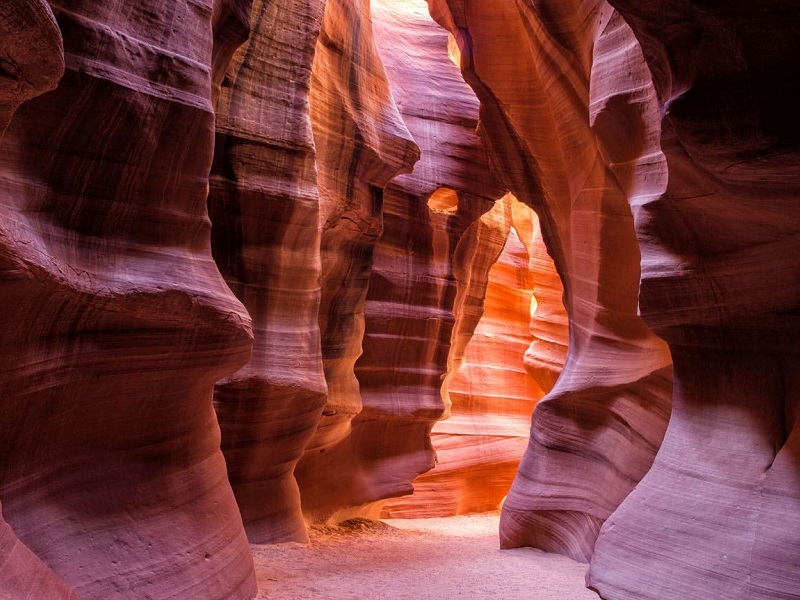
Another most mysterious place in the world, Antelope Canyon is a slot canyon in the American Southwest, on Navajo land east of Lechee, Arizona. It was formed by the erosion of Navajo Sandstone due to sub-aerial processes, and flash flooding during monsoon season, when the rainwater runs into the extensive basin above the slot canyon sections, picking up speed and sand as it rushes into the narrow passageways. Over time these passageways eroded, deepening the corridors and smoothing hard edges to form characteristic “flowing” shapes. Guided tours are required to visit Antelope Canyon.
Lake Hillier, Australia
Lake Hiller is a saline lake that sits beside the Pacific Ocean on Australia’s Middle Island. With a length of 600 meters and with of not more than 250 m, this tiny lake is one of the few places in the world that’s both mysterious and beautiful as its water is characterized by a picturesque pink color that makes it stand out from the blue ocean and the surrounding vegetation. The cause of this unique bubblegum-like color remains. However, researchers recently discovered that the lake’s unique color due to the presence of an organism called Dunaliella Salina. When the water of the lake reaches high salinity, high temperatures and sunlight make these algae release a pigment which can color the lake. It has plenty of fish living in its waters and is even safe for swimming, although tourists aren’t allowed in the water.
Reed Flute Cave, Guangxi, China
The Reed Flute Cave, also known as the Palace of Natural Arts, is a natural limestone cave and a popular tourist attraction in Guilin, Guangxi, China. The cave is 180 million years old and got its name from the type of reed growing outside, which can be made into flutes. With 240 m deep and 500 m long, the cave is filled with a great number of various exquisite stalactites, stalagmites, stone pillars, and rock formations which are named according to what they look like and the legends surrounding them, Crystal Palace, Fish Tail Peak, and Dragon Pagoda. Inside, there are more than 70 inscriptions written in ink, which can be dated back as far as 792 AD in the Tang Dynasty. Nowadays multicolored lights paint brilliant pictures on the walls of the cave, aiding the natural magical aura and giving the cave an almost otherworldly air.
Fly Geyser, Nevada
Fly Geyser is a small geothermal geyser located on private land near the edge of Fly Reservoir in the Hualapai Geothermal Flats in Washoe County, Nevada. Also known as Fly Ranch Geyser, it is approximately 5 feet high and 12 feet wide, counting the mound on which it sits. The first geyser was formed in 1916 when a well was drilled seeking irrigation water and was abandoned when geothermal water close to the boiling point was found. Similarly, the present geyser was created accidentally in 1964 after a geothermal power company drilled a test well at the site. According to reports, the well was either left uncapped or was improperly plugged. In either case, the scalding hot water shot from the well hole, and calcium carbonate deposits began to form. Those deposits have become three large mounds about 6 feet tall and are multi-colored green and red. The geyser’s travertine cones still spew scalding hot water about four or five feet into the air. Scientists note that the coloring on the outside of the mounds is the result of thermophilic algae, which flourishes in moist, hot environments.
Zhangye Danxia Landform, China
Zhangye Danxia National Geological Park is in the eastern foothills of the Qilian Mountains in the Gansu Province of China. The geological park has a spectacular Danxia landform area that covers about 50 sq. km. A masterpiece of nature, the landscape is known for otherworldly colors that mimic a rainbow painted over the tops of rolling mountains. Across the landscape, a kaleidoscope of numerous red rocky outcrops resembles weird and wonderful shapes like castles, cones, and towers as well as humans, creatures, birds, and beasts. Due to tectonic plate collision, the land folded and formed mountains from the ocean. Red sandstone was deposited when rivers formed in the area. When the ground sank into a basin, mudstone was deposited on the red sandstone. Because of the changes in sedimentary environments, the sedimentary layers formed have different colors red, purplish red, yellowish green, grayish green, and gray. Every layer took thousands of years to form.
Richat Structure, Mauritania
The Richat Structure is a prominent circular geological formation located in the heart of the mighty Sahara Desert. It is one of the mysterious places around the world. Also called the Blue Eye of the Sahara, the structure stretches across a 40 km-wide region in Mauritania. It was once said that the formation is the result of a meteor impact, but today researchers says that it was caused due to the process of geological uplift followed by erosion from wind and water. The structure was first photographed by Gemini astronauts and used it as a landmark in the 1960s, to monitor the progress of the opening sequences.
